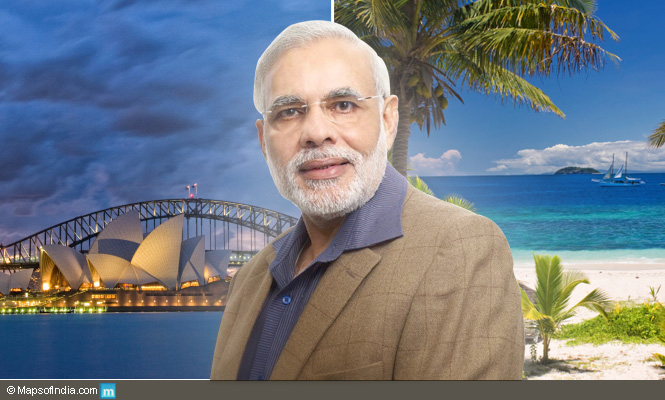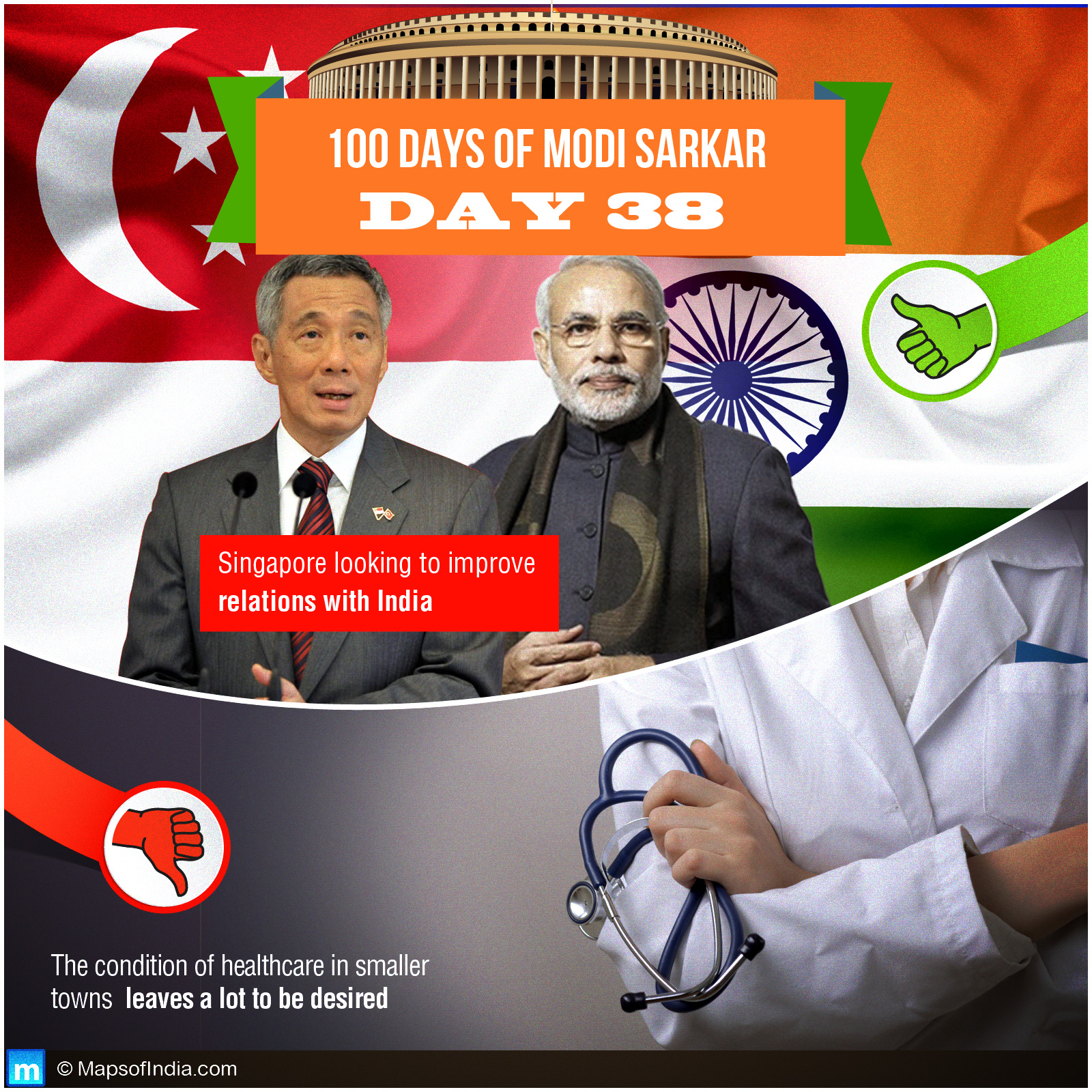India has begun charting a new course in the Pacific region, and it started with Prime Minister Narendra Modi’s visit to Australia and Fiji. While the move, aiming to give Delhi a strong foothold in the region, was missing from India’s foreign policy and strategic radar for close to three-decades, there is now a concerted effort to give it a momentum. Keeping it into account, India plans to host a summit of Pacific island countries. If sources are to be believed, both the Prime Minister’s Office and the External Affairs Ministry are working out in tandem to host the summit next year. Categorically, all this is done under “Act Fast”, the new mantra of the Narendra Modi-led government. Its contours were apparent during his just concluded Australia and Fiji visits.
His utterances before Australian parliamentarians that, “though it is an overnight journey from India to Australia, it took 28 years for an Indian PM to ever visit Australia,” was a hint towards Delhi’s seriousness to forge stronger relationship with this resource rich Pacific country. Except for India-Australia cricketing ties, Indian students’ presence (which in recent years declined) in Australian universities and freak defense and security engagement, there was nothing to show India’s seriousness toward making its relations with Canberra strong.
It can be assumed from the fact that since Prime Minister Rajiv Gandhi’s visit to this pacific nation in 1986, no high-profile visit from India was undertaken until Modi’s recent five days visit. Likewise, economic ties failed to shine in accordance with global position of the two respective countries. Trade between India-Australia declined from US $17.5 billion in 2011-12 to US$12.5 billion in 2013-14. In comparison, the two-way trade between Australia and China is more than US$120 billion. With the two countries now signing the Free Trade Agreement, there is possibility that the two-way trade may further multiply.
Australia Visit: Modi-Abbot Bonhomie in Full Play
In view of such chilling facts, Prime Minister Modi’s task in Australia was cut out; he relied on personal chemistry between him and Australian Prime Minister Tony Abbot to rewrite a mutually beneficial script which among several things included an agreement to hold regular meetings at the level of defence ministry, conduct regular maritime exercises and convene regular navy to navy, air force to air force and army to army talks.
A new framework for security cooperation to guide closer bilateral collaboration across the security spectrum, including defence, counter terrorism, cyber policy, disarmament and non-proliferation and maritime security was also established. Such mechanism, first since the two countries established diplomatic relations between them, would help in putting in place the much-needed structure for peace and stability in the Pacific region. Especially in the South China Sea where Beijing’s aggressive posturing is a source of consternation for India too (China’s warning to India on its exploration bid in Vietnam waters, is an example), these defence and security related agreements have high strategic value. Add to this is their reiteration “to work together more closely to build a safe and prosperous region, including through key regional forums such as the East Asia Summit”.
Modi in Fiji: Countering Chinese Influence
A par excellence diplomat that Modi has proved to be, firmed up a strategic roadmap for India’s reach in the Asia Pacific region when he undertook a long overdue visit by an Indian Prime Minister to Fiji, the small Pacific island nation where Indian origin comprised 37 per cent of its total population. He was the second Indian Prime Minister to visit Fiji in 33 years after Indira Gandhi. Fiji carries political and diplomatic weight among island countries of the South Pacific region, hence serves Delhi’s strategic goal both at the UN and in securing maritime route in the Asia-Pacific region. Thereby removing years of adrift in India’s foreign policy, Delhi signed three Memorandum of Understandings on training of Fijian diplomats in India, financing for an electricity co-generation plant funded through the Exim Bank of India and land for a new chancery building in India’s national capital. Other agreements included US$ 70 million worth of Line of Credit for electricity co-generation plant and US$5 million to strengthen and modernise Fiji’s village, small and medium industries. Along with this, cultural and people-centric diplomacy was played to their hilt. This included visa on arrival for all Fijians in India and e-network to connect the island country to provide tele-medicine and tele-education.
It marked a different chapter altogether in India’s foreign policy where circumspection and timidity earlier overrode even a genuine desire to protect national interest and activity.
Wooing other Pacific island Countries
Modi clubbed his Fiji visit with meeting with heads of small Pacific island countries like Nauru, Kiribati, Vanuatu, Solomon Islands, Samoa, Niue, Palau, Micronesia, Marshall Islands, Papua New Guinea, Cook Islands, Tonga and Tuvalu. This was the first ever meeting in Suva between Indian head of government and leaders of South Pacific island nations. These South Pacific islands are wooed vigorously by China by bringing in investments and money there. Diplomatic missions are also being established by Beijing there. In comparison, India has just made a beginning. It has announced a hike in Grant-in-Aid from US$125,000 to $200,000 annually to each 14 island country for community projects selected by them and a trade office of the Pacific Island nations in New Delhi. This is apart from US$1 million assistance India has provided for training and other capacity development purposes. To further deepen the relations with these countries, India proposed to hold regular a summit-level meet under the Forum for India-Pacific Islands Cooperation (FIPIC). It should be noted that like India, these countries share similar challenges of climate change. They also face challenges on developmental front. To meet this objective, Delhi has pledged to support them in development and capacity building process. Interestingly, such diplomatic overture with Pacific island nations was taken a few days ahead of Chinese President Xi Jinping’s visit to Suva, where like Modi, he held a summit-level meeting with all 14 Island countries. Thus, after South Asia and Africa, Pacific region is turning out to be another zone where rivalry between India and China is ready to get a new pace and momentum.
Related Information:






